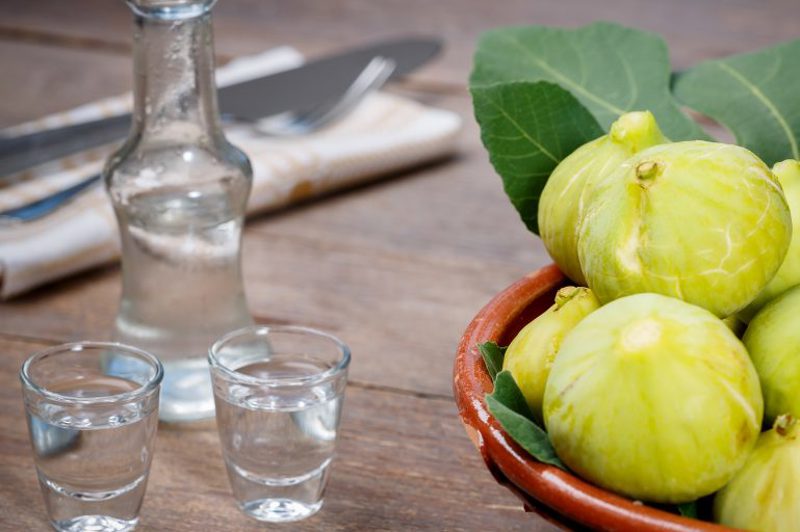
You must have tried at least one shot of raki, the fiery spirit served at the end of every traditional Cretan meal. For many it’s an acquired taste, and whether you sip it, or down it in one gulp as the locals usually do, one thing’s for sure – it’s breathtakingly strong. Also called Tsikoudia, raki, is at the heart of Cretan culture, and October is the time it’s produced across the length and breadth of Crete. In every village the process for making raki has been handed down through the generations, and it’s an ancient ritual that follows the grape harvest each year.
Officially, only registered distilleries are allowed to make raki – a law that dates back to the 1920s when permits were first given to farmers to allow them to use the leftovers from the grape harvest for extra income, and to establish some health safeguards for the production of this highly alcoholic liquor. Normally containing about 37% alcohol, raki is similar in strength to whisky or gin.
How raki is made
Crushed grapes (known as strafylla – the leftovers after the grapes have been pressed for wine) are kept for 4 to 6 weeks in a sealed barrel. This mixture of skins, pulp, seeds and stems, ferments during this time, and the raki-making or kazanema begins when the time comes to boil the fermented sludge in a special cauldron, known as a kazani. A ritual in itself, the first distillation is an event marked by each village, with locals gathering round the wood-fired copper kettle. Ready to sample the new vintage, the guests will usually enjoy snacks and traditional Cretan music will be played to add to the party atmosphere.
When the grape mixture boils in the cauldron’s chamber, steam begins to form as condensation, which in turn liquefies to become the raki. The liquid is filtered and tested for alcoholic strength, as the first litres produced are usually so alcoholic they have to be discarded. Once the first precious drops of raki are produced – and tasted, the kazani will be in action for two or three weeks, producing enough raki for the community to enjoy for another year.



















